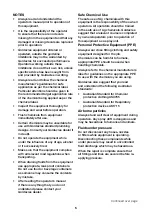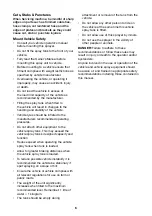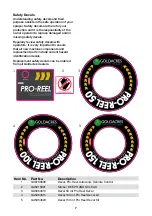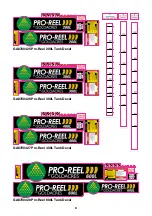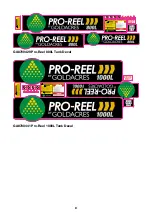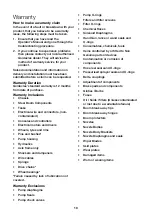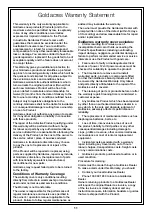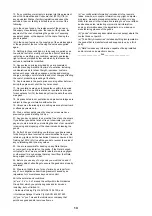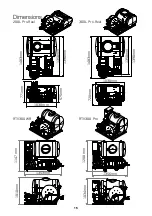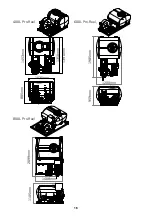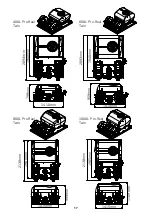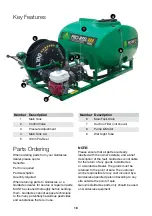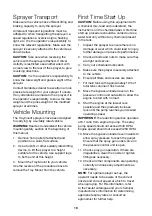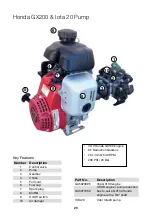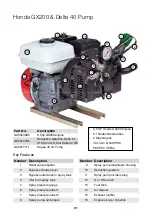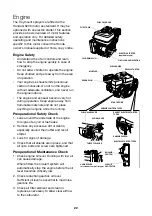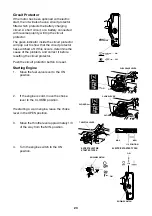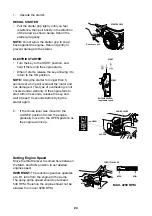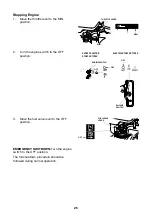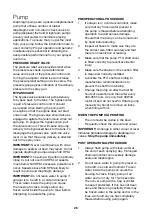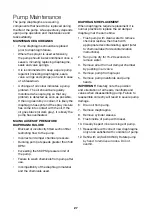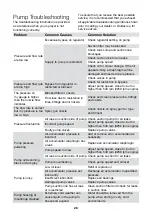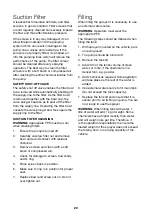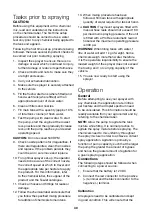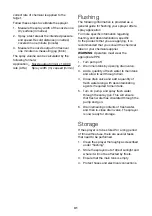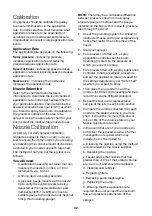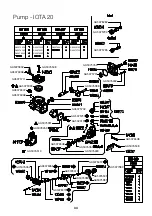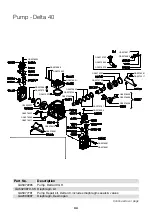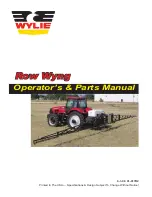
19
Sprayer Transport
Make sure the vehicle has sufficient lifting and
braking capacity to carry the sprayer.
All relevant transport regulations must be
adhered to when transporting the sprayer i.e.
speed regulations, oversize signs, flashing
light, etc. It is the operator’s responsibility to
know the relevant regulations. Make sure the
sprayer is securely attached to the vehicle as
shown below.
CAUTION:
Take care when reversing the
vehicle with the sprayer attached. If driver
visibility is restricted use another adult, with
a clear view to the rear of the sprayer, to give
reversing directions.
CAUTION:
It is the operator’s responsibility to
know the tare weight and gross weight of the
sprayer.
Contact Goldacres dealer to ascertain a more
precise tare weight for your sprayer if unsure.
If any alterations are made to the sprayer, it is
the operator’s responsibility to know the tare
weight and the gross weight of the modified
sprayer at all times.
Vehicle Mounting
The Traymount sprayers have been designed
for carrying by a suitably rated vehicle.
WARNING:
Read and understand the vehicle
mounting safety section at the beginning of
this manual.
1. Remove from pallet (if attached) and
position on a solid, flat surface.
2. Use a forklift, or other suitably rated lifting
device, to lift the sprayer to a height
suitable for the vehicle. Use support legs
to fix the unit at this height.
3. Mount the Tray Mount to your vehicle.
Use the reverse of the procedure above to
remove the Tray Mount from the vehicle.
First Time Start Up
CAUTION:
Before using this equipment with
a chemical mix, read and understand, the
instructions on the chemical label. A first time
start up procedure should be carried out as a
water test only without any chemical present
in the tank.
1. Inspect the sprayer to ensure there is no
damage or wear which could lead to injury,
further damage or reduce its performance.
2. Check all bolts and nuts to make sure they
are tight and secure.
3. Carry out scheduled lubrication.
4. Make sure the sprayer is securely attached
to the vehicle
6. Ensure all filters and nozzles are clean.
7. Fill main tank with approximately 10% of
total tank volume of fresh water.
8. Move the bypass unloader lever on the
pressure control unit outwards to allow the
engine to start with no load.
9. Start the engine at the lowest revs
possible and then gradually increase
revs until the pump reaches your desired
operating speed.
IMPORTANT:
The reduction gearbox operates
at 6:1 ratio from engine to pump. The spray
pump speed should not exceed 540 RPM.
Engine speed should not exceed 3250 RPM.
10. Move the bypass unloader lever inwards to
allow spray pressure to reach the gunjet.
Ensure that the spray gun outlet valve on
the pressure control unit is open.
11. Check spray gun operation. If there are
irregularities, clean the nozzle or tighten
fittings as necessary.
12. Check all other components are operating
correctly and make any adjustments as
necessary.
NOTE
: For optimal sprayer set-up, the
operator needs to be aware of the correct
nozzle and correct speed at which to travel
when spraying. For this information, refer
to the TeeJet catalogue and your chemical
manufacturer’s information for determining
appropriate spray rates or consult an
agronomist for further help.

